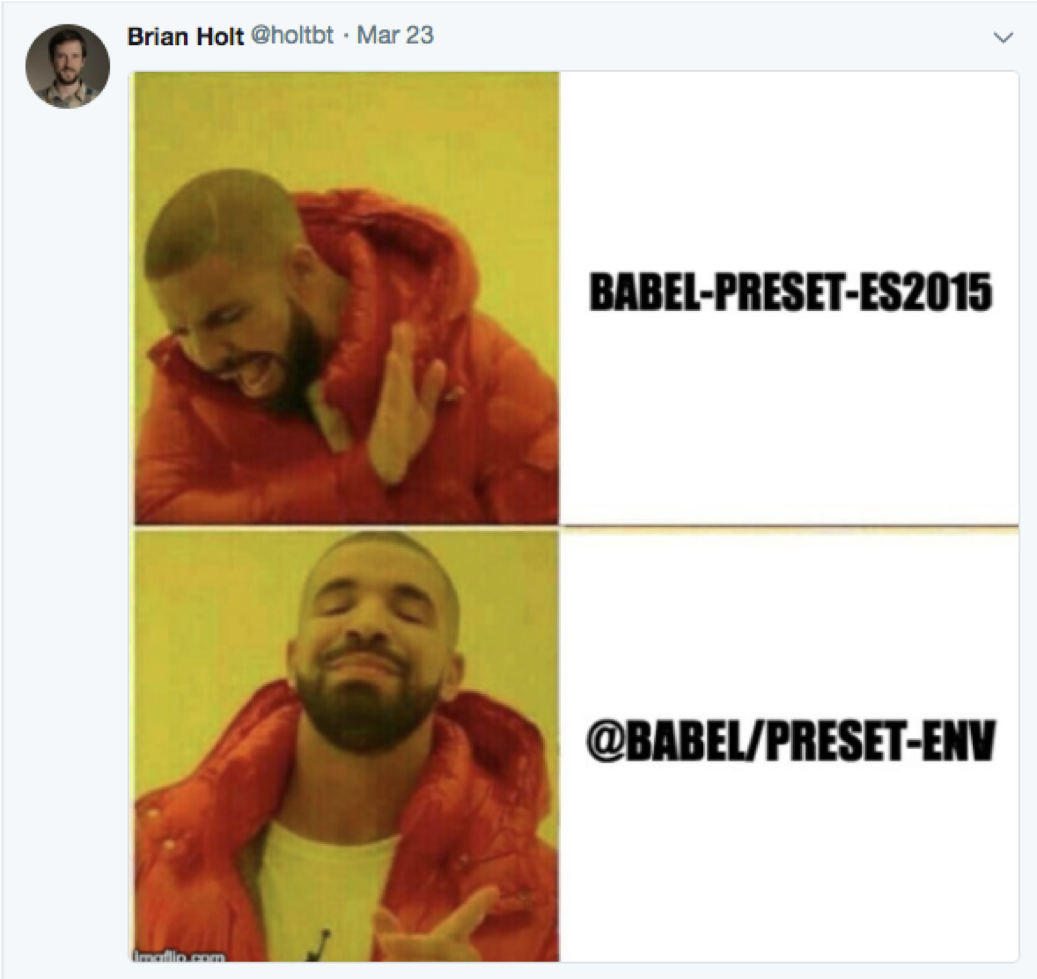NPM, YARN, BABEL, & WEBPACK
And why you should care


Yall should really learn this stuff
- Don’t (just) complain
- There’s no (just) vanilla JavaScript
- If you’re writing modern Node/JS in any sort of practical application, you’ll almost certainly be using NPM/Yarn and babel.
- If you’re shipping UI’s you should be using Webpack (or thinking about it)
Not JUST NEW HOTNESS
-
NPM
-
Yarn
-
Babel
-
Webpack
NPM
- A company
- A dependency manager
- A package registry
- A command line interface (CLI) for interacting with said package registry
- A lifestyle
npmjs.com

NPM Scripts
- NPM scripts are aliases for bash commands that go in you package.json file and run against the project’s node-modules directory
- This is how we expose our build, test, lint, etc. scripts regardless of what tools we’re using.
“scripts”: {
“build”: “webpack -p”,
“start”: “node ./index.js”
}
Yarn
Yarn is a drop in replacement for the NPM CLI.
It provides an alternative API to interact with the NPM package Registry and run NPM scripts
But y tho?
- NPM was dragging their feet on some much needed features (deterministic dependency resolution) so Facebook came to the table with an alternative NPM CLI that provided them - along with better performance and a cleaner syntax.
- NPM caught up in version 5 but by then everyone was using Yarn. Oops.

Babel
- Babel is a “compiler” for JavaScript
- It does absolutely nothing
- (Until you add some presets)
- Browsers and ES runtimes can’t always understand certain things like es6 and JSX (React)
- Babel takes that stuff and turns it in to universal es5 code
babeljs.io


“At its core, webpack is a static module bundler for modern JavaScript applications. When webpack processes your application, it recursively builds a dependency graph that includes every module your application needs, then packages all of those modules into one or more bundles.”
webpack.js.org
Webpack

Links And Demos
#Babel
FoundationPress gulp config with Babel
Babel song
#webpack
Complete Intro to React webpack config
React redux blog
ES6 Todo mvc webpack course
Eject from create react app
webpack bits: Getting the most out of the CommonsChunkPlugin()